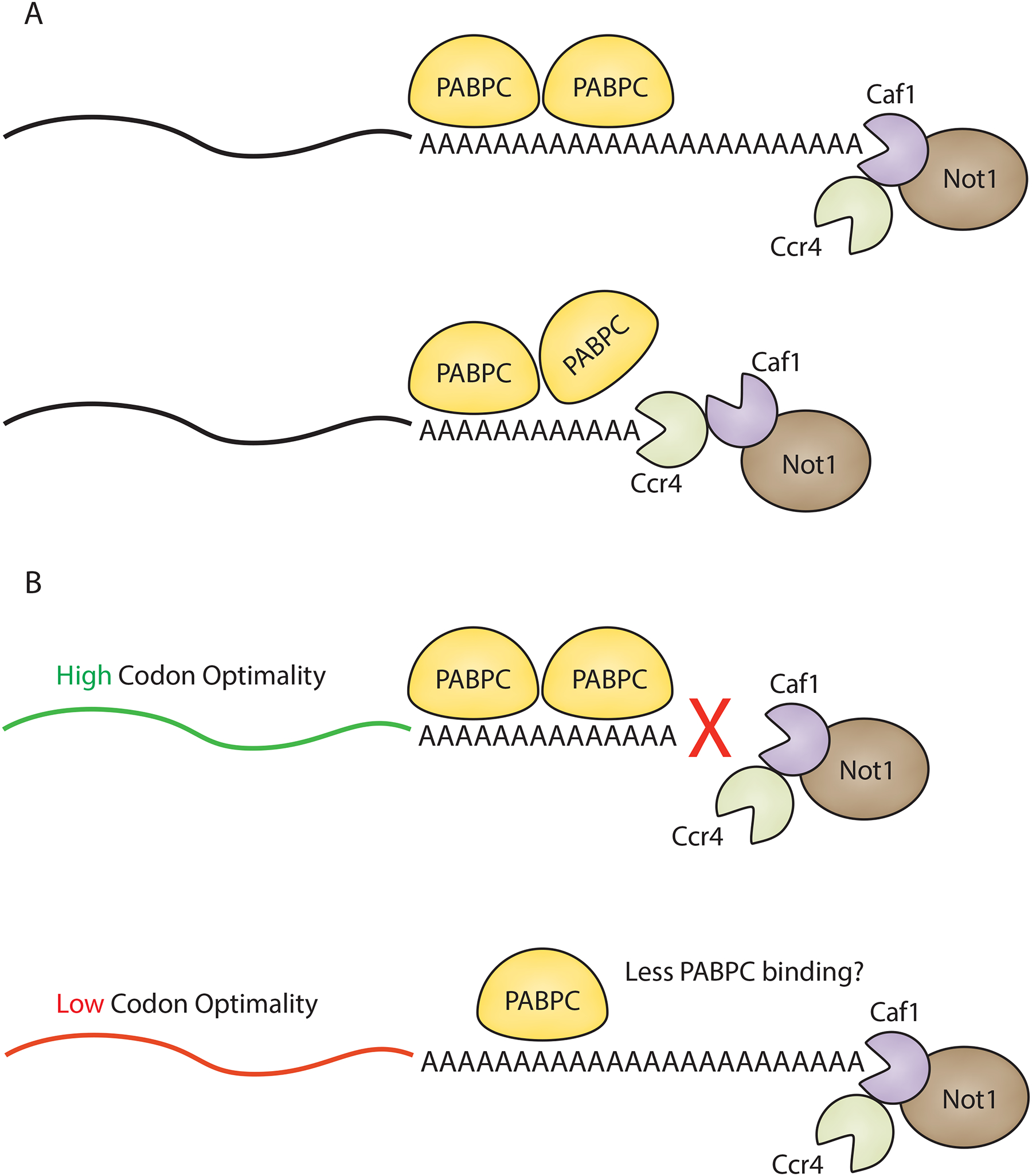Figure 3:

Differential activities of the Ccr4 and Caf1 deadenylases. A) Caf1 is able to deadenylate portions of the poly(A) tail that are not tightly bound by cytoplasmic poly(A) binding protein (PABPC) but will halt once it reaches PABPC. On the other hand, Ccr4 is able to displace PABPC from the poly(A) tail and continue deadenylating. Ccr4 is also able to act on poly(A) stretches that are not bound by PABPC. B) Caf1 preferentially accelerates deadenylation of low codon optimality transcripts. Ccr4 is able to act on both substrates but high codon optimality transcripts seem to rely solely on Ccr4-mediated deadenylation. This may be due to differences in PABPC occupancy on the tails of transcripts with higher (more PABPC) and lower (less PABPC) levels of optimal codons.
